In January, two weeks after Rick Solomon joined the YMCA near his home, he fell ill. The 65-year-old Berkeley resident hoped to spend the month working out, instead he laid in bed wheezing, with crippling muscle aches. He missed several days of work at a small publishing house.
For HIV Survivors, Pandemic Is Sad Reminder of Early Days of AIDS
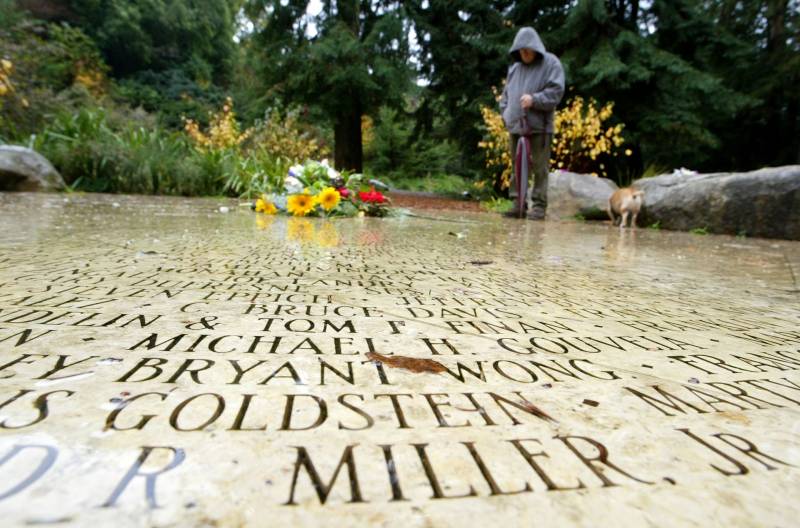
“I was sick for most of the month of February with a horrible cough like I’ve never had before,” said Solomon running his fingers through his thick salt and pepper hair. “It went into my chest. I used inhalers for the first time in my life.”
He was never tested for COVID-19 because he hadn’t traveled overseas recently, which was one of the official requirements for testing at the time. And although he has since tested negative for the virus’ antibodies, Solomon still believes he may have caught the bug.
“The test the lab used was not FDA approved,” he said. “So who knows? It was just a different kind of cold.”
Solomon took the antibody test because he wanted to enroll in a study at Zuckerberg San Francisco General Hospital looking at HIV-positive people infected with COVID-19. It’s a topic of special interest to researchers.
“COVID is going to have a major impact on the trajectory of the HIV epidemic,” said Dr. Steven Deeks, a UCSF professor of medicine and HIV researcher. “We just don’t know how.”
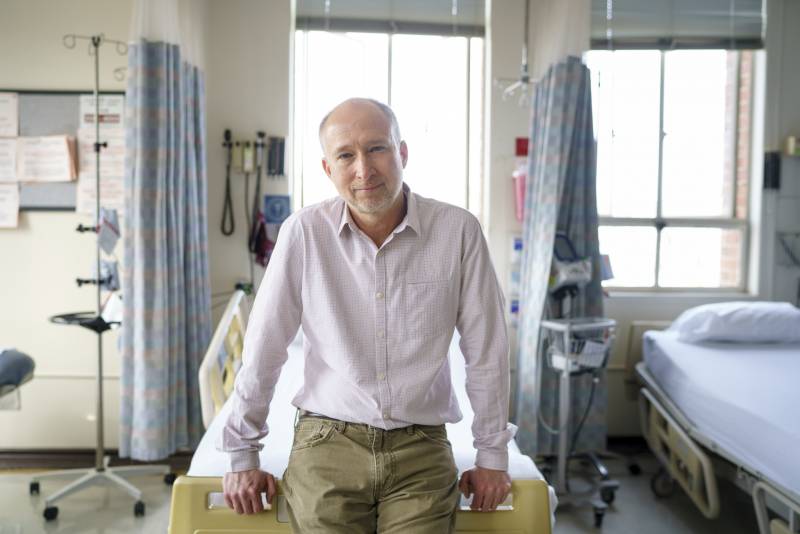
Some answers may come to light this week at the 23rd International AIDS Conference. The event was scheduled to happen in San Francisco and Oakland until the coronavirus hit. Now scientists, policymakers, public health experts and patients from around the world will gather virtually. COVID-19 is a central topic on the agenda.
Surprising Positive Trend
Infectious disease doctors assumed people with HIV would be at higher risk for complications from the novel coronavirus due to a weakened immune system. Plus, the majority of HIV-positive people in the U.S. are older, and many struggle with underlying conditions like heart disease and diabetes, which make illness from COVID-19 infection more severe.
Early in the outbreak, four of Dr. Edward “Lalo” Cachay’s patients were hospitalized for complications with COVID-19. Cachay, a professor of medicine at UC San Diego, feared the worst.
“You could potentially have a very dangerous combination of both biological and social determinants of health,” said Cachay.
HIV patients are not only immunocompromised, many also face psycho-social barriers like poor health insurance and mental illness. But not only did Cachay’s four patients experience good outcomes, this positive trend is playing out across the globe.
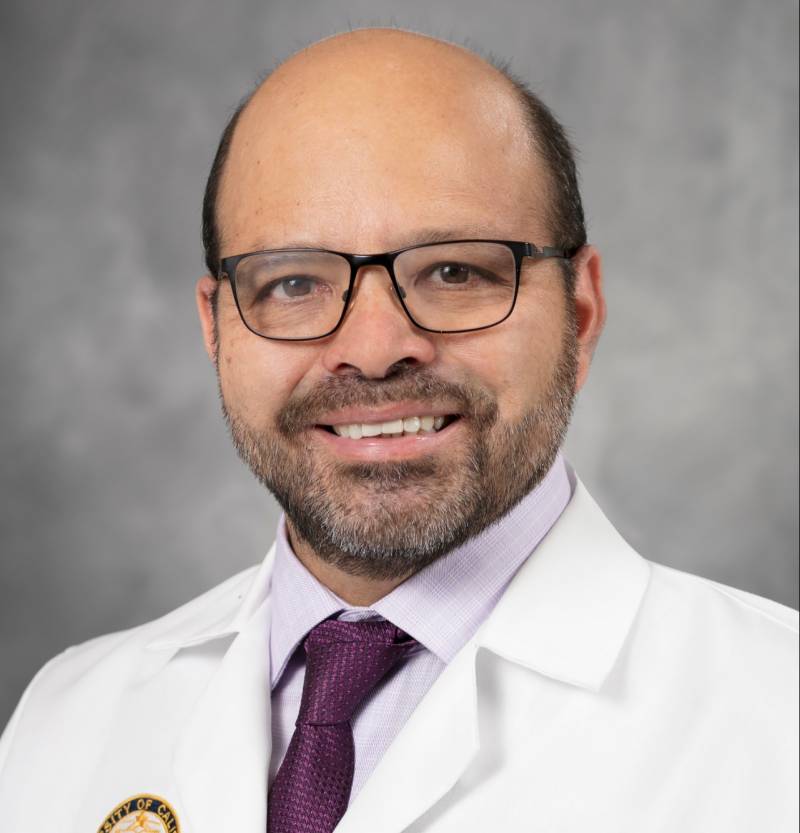
“People with HIV are radically underrepresented in the different cohorts coming from Europe and China with very advanced, severe forms of COVID-19,” Cachay said.
Two small studies from Spain and Italy show that HIV-positive people infected with COVID-19 did not fare worse than those without HIV. Scientists are not sure why.
More Questions Than Answers
“The bottom line is we have no idea,” said Deeks. “We have lots of interesting questions, lots of important questions, and lots of anecdotes. But at the end of day, we don’t have much data at all.”
Cachay hopes a study he is involved in will offer concrete answers. He’s partnering with scientists at the Fred Hutchinson Cancer Research Center and the University of Washington to answer some key questions: What factors might predict which HIV patients are most at risk? Do HIV patients who contract COVID-19 suffer severe illness? And are mortality rates higher in HIV patients who contract the novel coronavirus?
“I hope this study will help us disentangle the data more,” said Cachay.
Some experts theorize daily HIV meds might offer some protection against the coronavirus. Others wonder if the immune system of people with HIV is altered in a way that offers some resilience. Or, perhaps, experience helps.
“I am pretty sure that my patients, my older, primarily gay men who survived the ’80s and ’90s, were the first to effectively shelter in place because they know what a pandemic is,” said Deeks. “They know how a virus can ravage a community. They know how important social distancing is.”
Dr. Michael Gottlieb, the UCLA HIV physician who identified the first cluster of HIV cases in 1981, agrees.
“They’ve survived one virus,” he said. “They don’t want to be nabbed by this one.”
Lessons Learned From One Pandemic Help Save Lives in Another
John Schumacher, a 63-year-old soft spoken gay male, is a case in point. Over the years, the long-term HIV survivor and community volunteer has faced many perilous moments with his health.
“I’ve learned to err on the side of caution,” Schumacher said. “You know, to wear a condom if someone else wants to, wear gloves, to do what is safer or what seems safe, even if I may not agree.”
When the coronavirus started spreading, he started washing his hands diligently and wore a mask before it was widely recommended. He always carries hand sanitizer, and he says the same is true for his 31 housemates who are also HIV-positive. The group shares a community house in San Francisco. Fortunately no one has tested positive for COVID-19.
“We think we had the training to do better in this pandemic,” said Jesus Guillen, of San Francisco. “We have experience at many of these things. We know how to push past barriers.”
For example, even though Guillen loves to socialize, he didn’t balk when officials announced the stay-at-home directive because he understands all too well what’s at stake. Over the years, the tall flamboyant Latino has lost many close friends, including his first American lover whom he met soon after crossing the Mexican border in 1984.
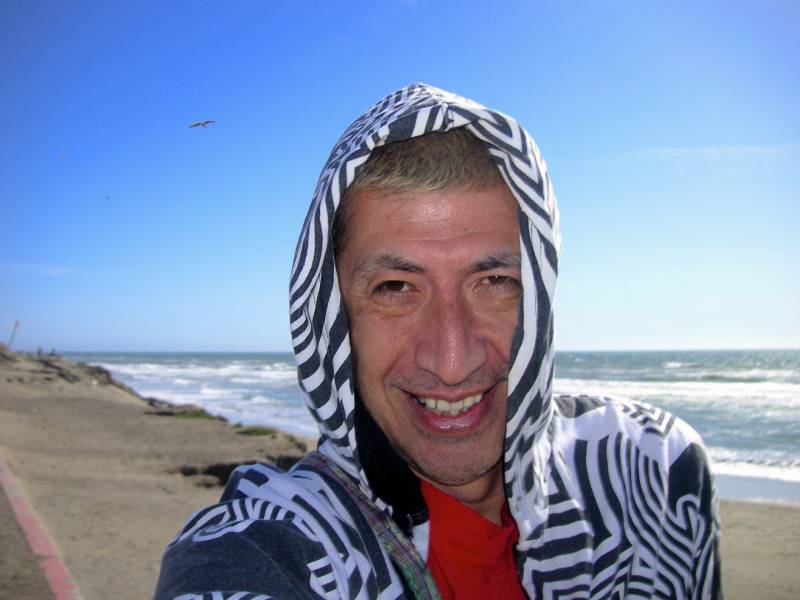
“I was with just one person,” he sighs. “And sadly, he died one year later.”
‘We Got The Real Social Distancing’
Today, the 60-year-old with spiky platinum hair and a turquoise earring is a proud activist in San Francisco. But when he first found out he was HIV-positive, he was a shy immigrant who didn’t tell anyone.
“In those times, they were not allowing people who were HIV-positive to stay in this country,” he said.
But it was more than just fear of deportation that silenced Guillen. In 1985, a Los Angeles Times poll revealed a majority of Americans favored quarantining people with AIDS.
“We got the social distancing through discrimination, through a stigma, through homophobia, through all those things, We got the real social distancing,” he said.
At the beginning of the coronavirus outbreak, memories from the ’80s flooded back. The Grand Princess cruise ship carrying passengers with COVID-19 was docking at the Port of Oakland, when Guillen overheard a conversation on a bus.
“She was a normal average person saying, ‘Why do they allow them to be right there in Oakland? They should be taking these people to an island.'”
“That took me back so much to the early ’80s with HIV.” Guillen winced. “People wanted to put us in cages or places completely separate.”
Hauntingly Similar
Four decades ago, no one could have imagined AIDS would kill more than 700,000 people in America, and more than 32 million worldwide.
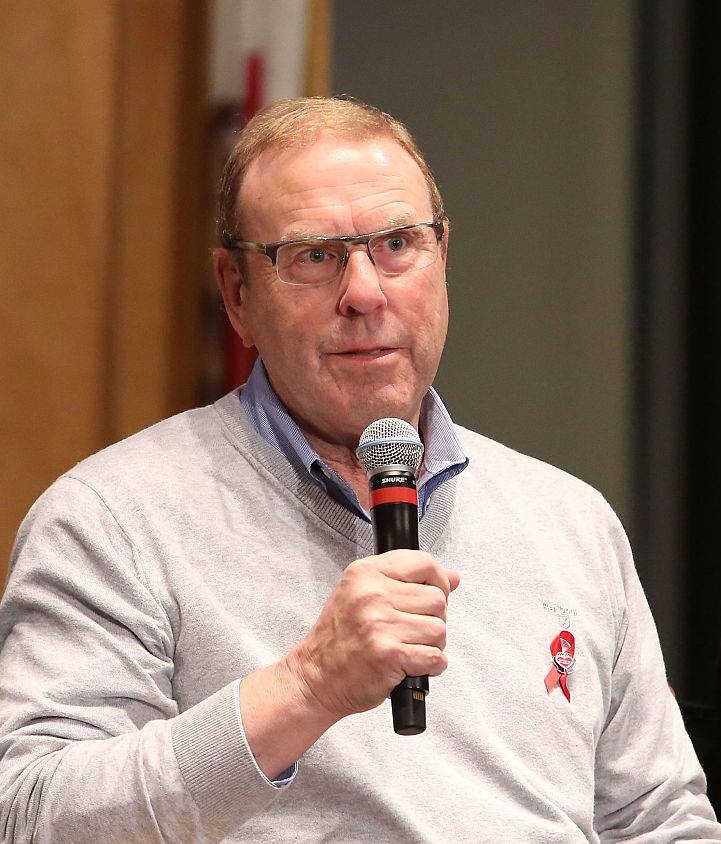
“I thought that the very first case might just be a one-off phenomenon,” said Dr. Michael Gottlieb, of UCLA. “We didn’t even know that AIDS was caused by a virus. We didn’t know that for two full years after the description of the first patients.”
Scientists like Gottlieb struggled to access funding to study HIV. It took a couple of years before researchers understood how AIDS was transmitted. Fear plagued gay neighborhoods like the Castro. People worried a cough or a toilet seat might be a death sentence.
“You’d go out in the street at night and no one would be there,” said Rick Solomon, a 65-year-old Berkeley resident who is enrolled in a COVID-19 study at San Francisco General. “And the bars were almost empty. People didn’t go out.”
Throughout the ’80s, Solomon kept a little notebook of names of people who died. The list grew to more than 200 people. He was not surprised when he tested positive in 1990.
Even though HIV and the new coronavirus are not similar in genome, transmission or mortality; the experience of living through two plagues is hauntingly comparable.
“The apocalyptic scenes of New York City ICUs overwhelmed with people with COVID-19 pneumonia remind me of our early days where patients with AIDS presented very late with pneumocystis pneumonia and required ventilators,” said Gottlieb.
Other elements are also familiar. Results from small studies are overblown. Officials change course abruptly. Public health is politicized. Lives become statistics. Headlines tout new cures. Vaccines are promised. And at the end of the day, individual actions save lives.
“Back in the early ’80s, the answer was condoms and fewer sexual partners,” said Gottlieb. “Today, the answer is masks and social distancing. Behavior change is essential in preventing the spread of both of these viruses.”
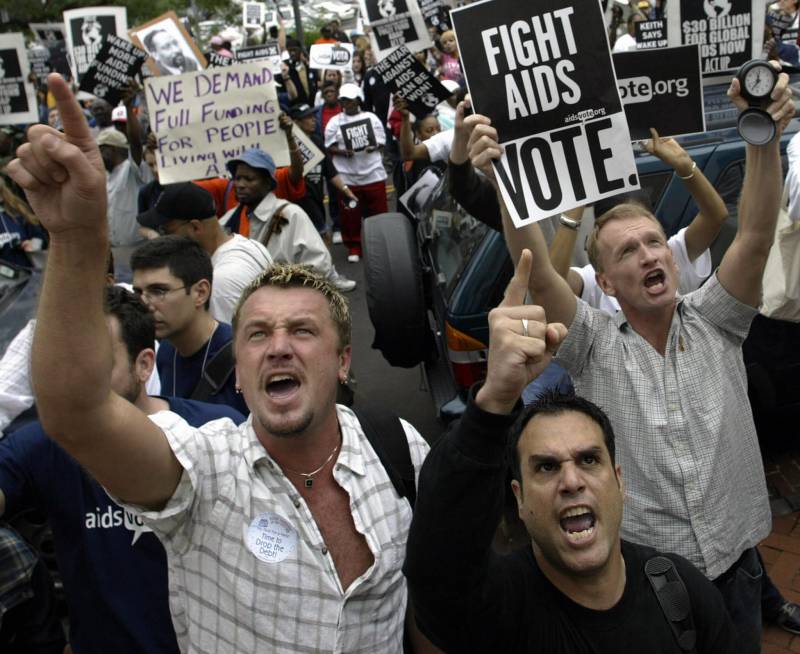
Piercing Differences
But, for many long-term HIV survivors, the differences between the two pandemics shadow the similarities.
For years, HIV advocates and patients protested to garner government attention and funding. “We were literally fighting for our lives,” said Solomon.
Today, many medical researchers say it’s difficult to find funding for projects that aren’t coronavirus. Scientists mapped the entire COVID-19 genome and understood transmission within months, not years, after initial infections broke out in China.
Now, a few months into the coronavirus outbreak, some people have hit the streets demanding officials do less to protect society from the coronavirus.
“In many ways, there’s no comparison,” says Guillen, “because in those days the reality is society in general didn’t care.”
This week at the AIDS 2020 Conference, scientists may reveal a physiological reason HIV patients are weathering the coronavirus better than predicted. But, Guillen believes coping skills are playing a key role. Long-term survivors have pushed up against disinterest, oppression and even disgust for decades, and yet, “We found ways to keep going,” he said.
